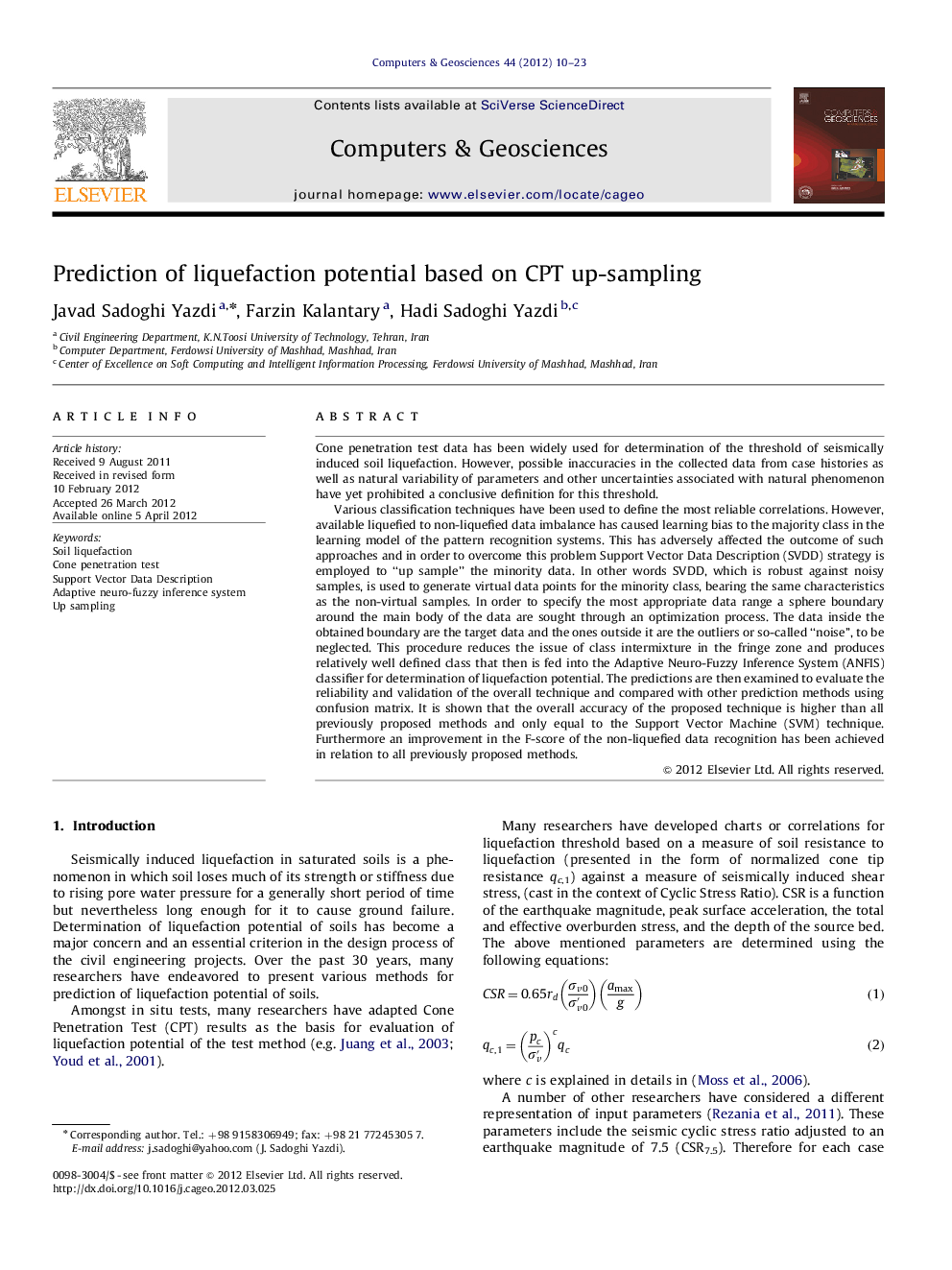| Article ID | Journal | Published Year | Pages | File Type |
|---|---|---|---|---|
| 507981 | Computers & Geosciences | 2012 | 14 Pages |
Cone penetration test data has been widely used for determination of the threshold of seismically induced soil liquefaction. However, possible inaccuracies in the collected data from case histories as well as natural variability of parameters and other uncertainties associated with natural phenomenon have yet prohibited a conclusive definition for this threshold.Various classification techniques have been used to define the most reliable correlations. However, available liquefied to non-liquefied data imbalance has caused learning bias to the majority class in the learning model of the pattern recognition systems. This has adversely affected the outcome of such approaches and in order to overcome this problem Support Vector Data Description (SVDD) strategy is employed to “up sample” the minority data. In other words SVDD, which is robust against noisy samples, is used to generate virtual data points for the minority class, bearing the same characteristics as the non-virtual samples. In order to specify the most appropriate data range a sphere boundary around the main body of the data are sought through an optimization process. The data inside the obtained boundary are the target data and the ones outside it are the outliers or so-called “noise”, to be neglected. This procedure reduces the issue of class intermixture in the fringe zone and produces relatively well defined class that then is fed into the Adaptive Neuro-Fuzzy Inference System (ANFIS) classifier for determination of liquefaction potential. The predictions are then examined to evaluate the reliability and validation of the overall technique and compared with other prediction methods using confusion matrix. It is shown that the overall accuracy of the proposed technique is higher than all previously proposed methods and only equal to the Support Vector Machine (SVM) technique. Furthermore an improvement in the F-score of the non-liquefied data recognition has been achieved in relation to all previously proposed methods.
► Up-sampling approach is used for classification of imbalance data based on description of non-liquefaction. ► This approach is performed using support vector data description (SVDD). ► Support vector non-liquefaction description sets apart noisy samples and therefore generates appropriate data. ► Another viewpoint of data generation is Monte Carlo with probability density function which SVDD gives us.
